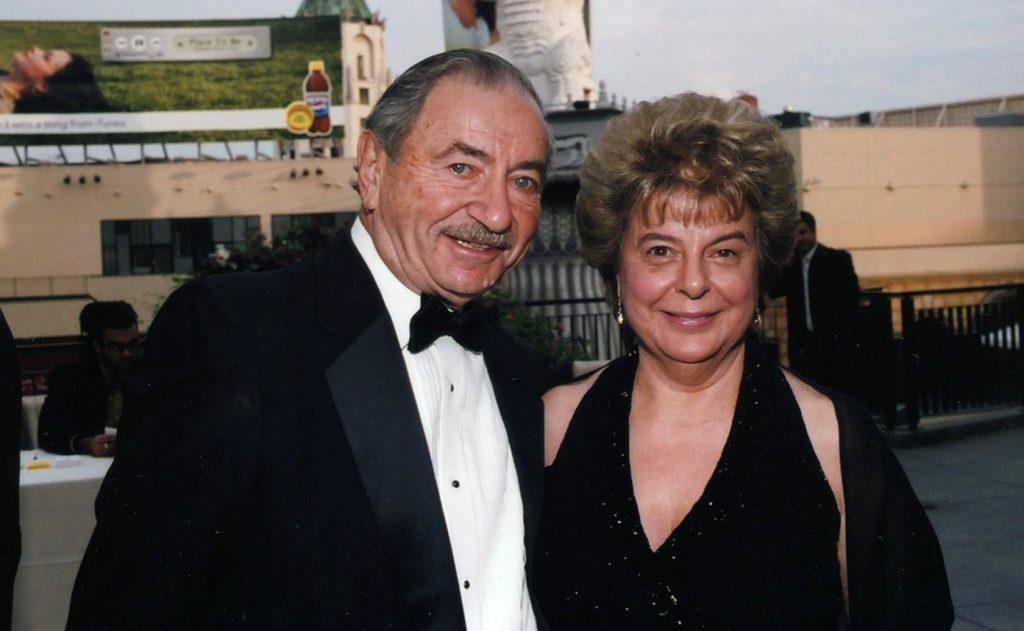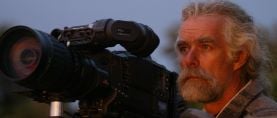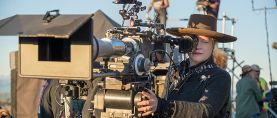
In Memoriam: Sol Negrin, ASC (1929-2017)
The New York-based cinematographer was as well-known as an educator and inspiration to aspiring filmmakers as he was for his expert, award-winning camerawork.

It’s with great regret that we must report that Sol Negrin, ASC died on March 20, 2017 at the age of 88.
Negrin earned five Emmy nominations, three for episodes of the series Kojak (in 1974, 1975 and 1976), one for the telefilm The Last Tenant (1978), and one for an episode of the series Baker’s Dozen (1982). His cinematography in television commercials earned four Clio Awards, including one for American Tourister’s memorable “Bouncing Suitcase” campaign in the early 1970s.
Negrin’s other credits as a director of photography include episodes of the series McCloud, The Lucie Arnaz Show, The White Shadow, St. Elsewhere and Rhoda; the telefilms Best of Friends, Dempsey, And Your Name is Jonah and Women at West Point; the music documentary The Concert for Bangladesh; and the feature films Amazing Grace (1974), Proof of the Man and Parades. He also contributed additional cinematography to many feature films, including Superman (1978), Coming to America, King Kong (1976), Jaws 2 and RoboCop.
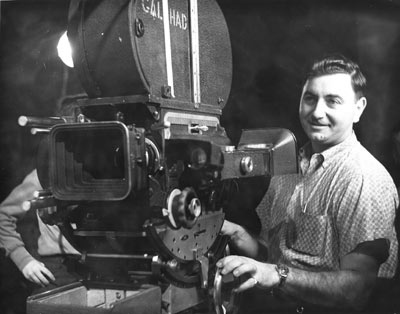
Negrin was born in New York City on February 16, 1929. His father worked in the garment industry, but the younger Negrin had the dream of becoming a naval architect and had a goal of attending the U.S. Naval Academy or Webb Institute, the top two schools with naval-engineering programs. But it eventually became clear that his math skills were holding him back.
“I had an adviser who asked whether I had an avocation,” Negrin told American Cinematographer in a 2010 interview with David Heuring. “I told him I liked photography, and he suggested I pursue that.”
It was good advice.
Negrin soon passed the exam for the High School of Industrial Arts [now the High School of Art and Design] — the only school at that time that taught both still photography and filmmaking — and gravitated to film work.
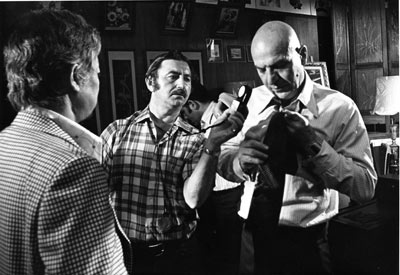
Concurrently, Negrin found employment at Hartley Productions, an industrials and commercials production house with such clients as Pan Am and the U.S. government. He started off by sweeping the floor for $5 a week. He was gradually given more responsibility, and later became a camera assistant. When he graduated from high school and began working full time at Hartley, he got a hands-on education about everything related to 16mm and 35mm filmmaking. “I worked on commercials, documentaries, industrial films and, eventually, feature films and television,” he said.
In 1948, Negrin joined ADTFC/NABET, a union whose membership worked in documentaries and television. By 1952, he was able to join the International Photographers Union-Local 644, which represented commercial and feature-film camera crews. He furthered his training at City College Film Institute and took courses at the RCA Institute through the International Photographers Guild.
Negrin worked as a camera assistant from 1948 to 1960 alongside noted such ASC cinematographers as Torben Johnke, Joe Brun, Jack Priestley, Lee Garmes, Joe Biroc, Leo Tover, Harry Stradling Sr., Hans Koenekamp, Charles Lang, Charles “Buddy” Lawton, Mario Tosi and Boris Kaufman. “The best part about being an assistant is that you get to observe,” he said. “From Lee Garmes, I learned simplicity. He had an eye for composition and good taste. I worked with Hans Koenekamp on some visual-effects shots for Damn Yankees. He really knew his effects and was a master lighting cameraman as well. With Charles Lang, we were doing a shoot where Joan Crawford spoke to stockholders of Pepsi-Cola. Charlie photographed her as if it were a feature, using the diffusion nets and glass as needed. That was an education in itself. Boris Kaufman was from a different generation; he was a master of hard light. Like Harry Stradling, he knew how to use one large source and make it do the work of many lamps.”

Negrin had a special relationship with Johnke, who had emigrated from Denmark. “I worked with Torben as an assistant when he first arrived in this country, and later I worked for him as a director of photography when he became a producer and director,” said Negrin. “He was one of my mentors. He had his own techniques, and he taught me a lot.”
Negrin was later on staff at MPO Videotronics, then the largest commercial production house in New York City. “They had fully-equipped studios in Queens and Manhattan,” Negrin said, “and it was the definitive operation. Their staff cinematographers included Zoli Vidor, ASC; Akos Farkas; and Gerry Hirschfeld, ASC. A lot of great cinematographers were trained there early in their careers, including [future ASC members] Owen Roizman and Gordon Willis. Gordon was my assistant on one project. There was a lot to learn. Later, I worked at Filmex, another commercial house, as a director of photography with ASC members like Adam Holender, Drummond Drury and Jack Priestley.”
When Negrin was a camera operator, he worked on such TV series and feature films as Frankenstein Meets the Spacemonster, Where’s Poppa?, Across 110th Street and I, the Jury. He operated the camera on 21 episodes of The Patty Duke Show, which gained him valuable experience. He also operated the camera on Naked City, a landmark TV drama that helped establish the New York school of cinematography, founded on a gritty, location-based look. Other TV operating credits Negrin earned in this period include The Defenders, East Side-West Side and Car 54, Where Are You?
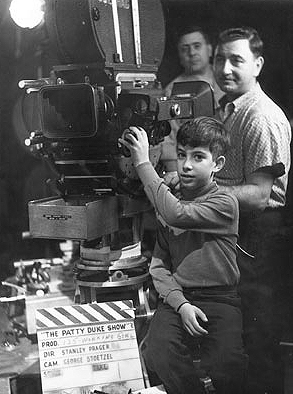
Negrin’s first opportunity as a cinematographer arose on a pair of TV documentaries about two West African nations emerging from colonial rule. Negrin quickly earned kudos for his work, and by 1974 he was invited to join the ASC. He was proposed for membership by members Gerald Perry Finnerman and Harry Stradling Sr.
Negrin earned his first Emmy nomination for the “Wall Street Gunslinger” episode of Kojak, the TV series that starred Telly Savalas as a hard-nosed New York detective. That same year, Negrin was elected president of 644, the New York local; it was the first of several terms he would serve. He eventually shot 24 episodes of Kojak, earning two more Emmy nominations along the way.
In the early 1970s, Negrin earned Clios for excellence in advertising for his work on four different national campaigns. He continued working on TV projects, feature films and commercials through the 1980s and into the 1990s. In 1987, he received the Billy Bitzer Commendation Award from Local 644 for his contributions to the union, and in 2000, he received an honorary doctorate of fine arts degree from Long Island’s Five Towns College, where he has taught cinematography for the last decade. In 2005, the college handed him another honor, a lifetime achievement award.
In 2010, Negrin was honored by the ASC with the Presidents Award, in recognition of not only his expertise behind the camera, but for being an ambassador of the art and craft of cinematography. “To receive the Presidents Award this year means so much to me,” he said. “I’m honored and very happy.” This is his acceptance speech from the ceremony:
And, in 2012, Negrin received the Society of Operating Cameramen Distinguished Service Award. This video was created for that occasion:
Negrin often shared his wealth of experience and expertise with students and aspiring filmmakers through mentorships, seminars, demonstrations and speaking engagements. He was co-chair of the ICG Educational and Training Committees and a Life Member of the Society of Motion Picture and Television Engineers, where he has been on the roster for an astonishing 65 years. He was also a member of the Directors Guild of America.
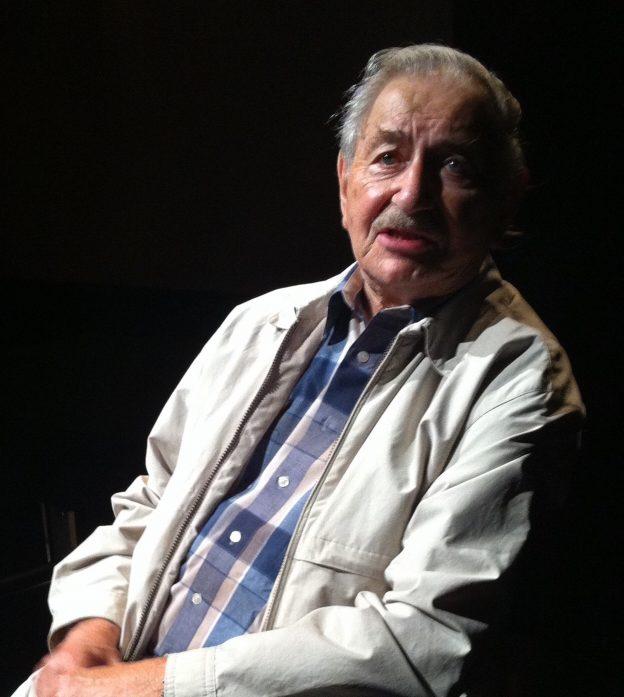
Membership in the ASC was a particular honor for Negrin, and he took special pride in the fact that his son, Michael, is also a member of the Society. “In 1942, I read my first issue of American Cinematographer, which featured many fine, well-known cinematographers of the time,” said Negrin. “I knew at that moment that I wanted to be an ASC member. I very much admired the work of ASC members Gregg Toland, Harry Stradling Sr., Lee Garmes, Ernest Haller, Stanley Cortez and Hal Rosson. The day I was accepted as a member was one of the most memorable in my life. The camaraderie of being in the company of such talented individuals is something I never expected.
“The best advice I was ever given came from Harry Stradling, who said, ‘Never be afraid to take a chance. It may be the best thing you ever did.’”
Negrin is survived by his wife of 16 years, Betty (Paradisin) Negrin; his son, Michael, daughter-in-law Cari Lutz, and granddaughters Sophia and Natasha. He is also survived by step children Bill Paradisin, Anne Marie Paradisin, Rich Paradisin, Vicky Paradisin, Shelley Paradisin (Jim Vignato) and step grand-children Catherine, Beth, James, Shane, Emma, Genevieve, Jimmy, Jake and Ryan. He was preceded in death by his first wife, Shirley, and his son Robert Lloyd Negrin.
